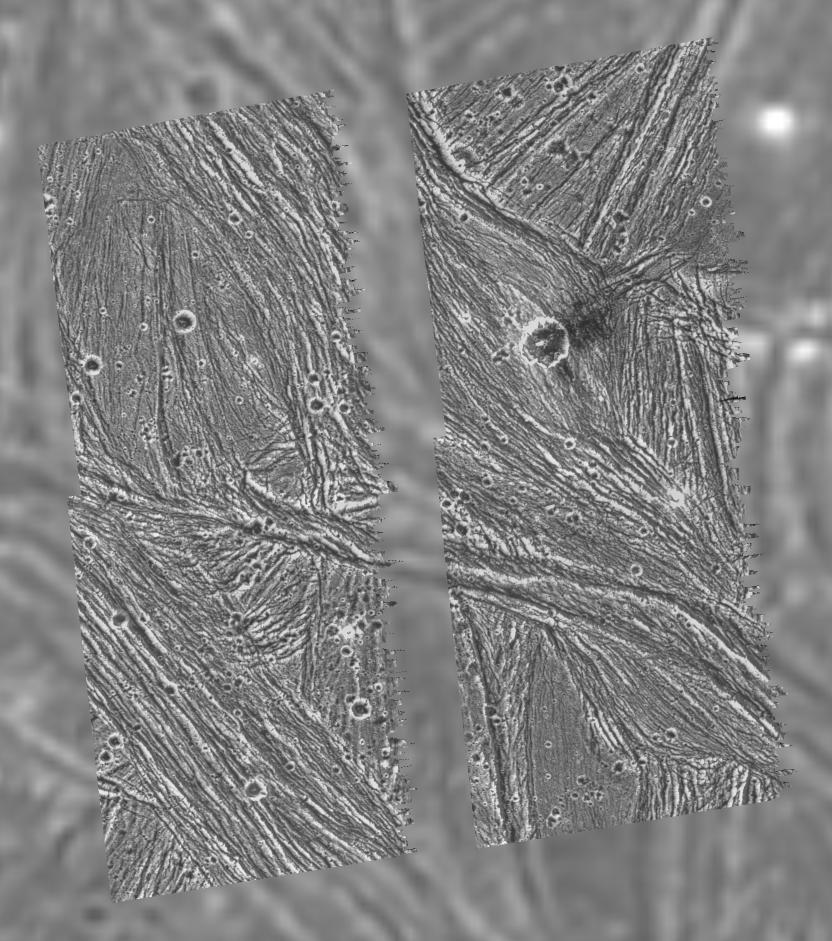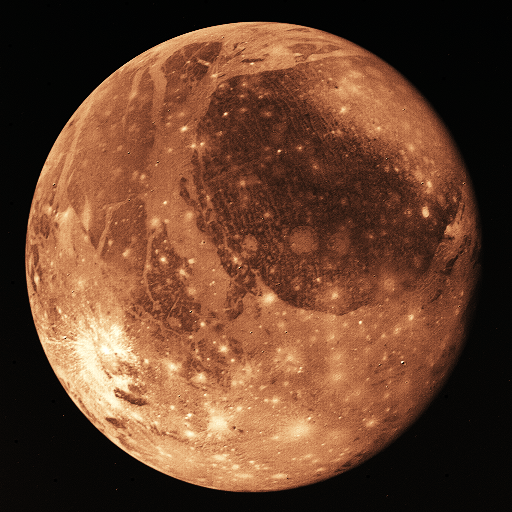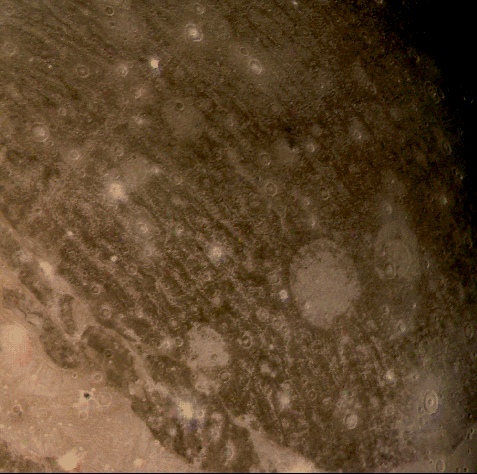
 Biggest
moon in the solar system -- bigger than Mercury.
Biggest
moon in the solar system -- bigger than Mercury.
The Galileo probe detected a magnetic field, suggesting the interior has a small inner metallic core, surrounded by rocky outer core and a massive ice mantle.
Task: Look at the
picture and tell me something about the how active Ganymede surface is.

Probes also photographed plenty of impact sites. What does this tell us?

Whatever heated Ganymede no longer is doing so. Perhaps
early period of heating was triggered by orbital motions of the Galilean
moons as they "locked into" their resonant orbits?